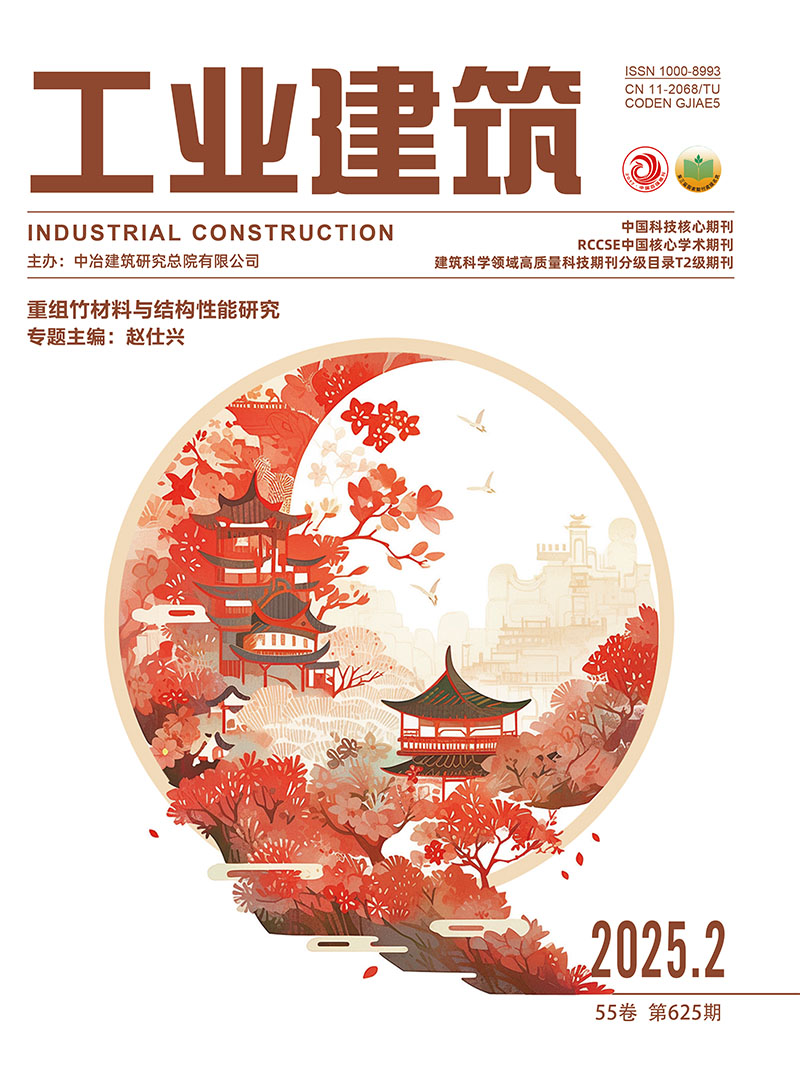| [1] |
XIAO C, LI J, LI Y, et al. Application and innovation of high-strength concrete in high-rise building structures[J]. Structural Engineering International, 2022, 32(2): 236-242.
|
| [2] |
李传豹.高强混凝土在高层建筑中的优化应用[D].深圳:深圳大学,2018.
|
| [3] |
URAZOVA ALINA ANDREEVN A, DENISOVICH K E, OLIMPIEVICH K M, et al. Technology of production and application of high-strength concrete[J]. Modern Scientific Researches and Innovations, 2017, 70, 78504.
|
| [4] |
王晓东.高强混凝土在公路桥梁工程中的应用[J].交通世界,2020(35):145-146.
|
| [5] |
栾桂良. 高强与高性能混凝土的发展及应用[J]. 城市建设理论研究(电子版),2015(4):2757-2758.
|
| [6] |
CERVERA M, OLIVER J, PRATO T. Thermo-chemo-mechanical model for concrete. I: Hydration and aging[J]. Journal of Engineering Mechanics, 1999, 125(9): 1018-1027.
|
| [7] |
朱伯芳. 大体积混凝土温度应力与温度控制[M]. 北京:中国电力出版社, 1999.
|
| [8] |
王德辉. 超高强混凝土的硬化过程[D]. 长沙:湖南大学,2015.
|
| [9] |
侯炜,宋一凡,马超. 基于管冷系统的大体积混凝土水化热时变温度效应[J]. 长安大学学报(自然科学版),2021,41(4):65-77.
|
| [10] |
唐杨, 曹海洋, 谭红梅. 冷水管布置线形及设置参数对承台水化热分析的影响[J]. 混凝土与水泥制品, 2019(4):86-91.
|
| [11] |
CASTILHO E, SCHCLAR N, TIAGO C, et al. FEA model for the simulation of the hydration process and temperature evolution during the concreting of an arch dam[J]. Engineering Structures, 2018, 174: 165-177.
|
| [12] |
HUANG Y, LIU G, HUANG S, et al. Experimental and finite element investigations on the temperature field of a massive bridge pier caused by the hydration heat of concrete[J]. Construction and Building Materials, 2018, 192:240-252.
|
| [13] |
冯树隆.某黄河大桥承台大体积混凝土的水化热分析[J].水利与建筑工程学报,2024,22(1):110-118.
|
| [14] |
岳著文,贾同安,李晓东,等. 某特大桥大体积承台水化热计算分析[C]//2022年工业建筑学术交流会论文集.北京:2022.
|
| [15] |
马伟强,孙伟,安峻彤,等.下沉式现浇隧道底板大体积混凝土温度监测与数值模拟研究[J].建筑结构,2023,53(增刊2):1454-1458.
|
| [16] |
张海明,潘乐,荣华,等.某"华龙一号"核电站核岛基础大体积混凝土施工裂缝控制[J].工业建筑,2019,49(2):27-30.
|
| [17] |
曹霖. C80混凝土柱流变性能及水化热模拟研究[J]. 建筑施工,2020,42(12):2318-2320
,2327.
|
| [18] |
袁军峰,张建东,刘朵,等.大跨连续箱梁桥0~#块高强混凝土水化热及温控措施分析[J].中外公路,2019,39(5):97-101.
|
| [19] |
SBIA L A, PEYVANDI A, HARSINI I, et al. Study on field thermal curing of ultra-high-performance concrete employing heat of hydration[J]. ACI Materials Journal, 2017, 114(5): 733-744.
|
| [20] |
许文忠. 大体积混凝土基础温度裂缝控制施工技术研究[D]. 上海:同济大学,2007.
|
| [21] |
侯雁南. 大体积混凝土裂缝控制及处理措施研究[D]. 济南:山东大学,2007.
|
| [22] |
袁毅. 超高强大体积混凝土水化热温控分析研究[D]. 武汉:华中科技大学,2019.
|
| [23] |
中华人民共和国住房和城乡建设部. 大体积混凝土施工标准:GB 50496—2018 [S]. 北京:中国建筑工业出版社,2018.
|
| [24] |
中华人民共和国住房和城乡建设部. 大体积混凝土温度测控技术规范:GB/T 51028—2015[S]. 北京:中国建筑工业出版社,2015.
|
| [25] |
ACI. Specifications for structural concrete: ACI 301-16[S]. Farmington Hills, MI: American Concrete Institute, 2016.
|
| [26] |
BSI. Concrete-part 1: specification, performance, production and conformity: BS EN 206-1∶2000[S]. London: British Standards Institution, 2000.
|
| [27] |
CEN. Eurocode 2: design of concrete structures-part 1-1: general rules and rules for buildings: EN 1992-1-1∶2004[S]. Brussels: European Committee for Standardization, 2004.
|
| [28] |
王龙,鲁乃唯,王柏文. 大体积混凝土承台水化热分析及管冷参数优化[J]. 工程建设,2019,51(4):1-5
,17.
|
| [29] |
朱伯芳.混凝土绝热温升的新计算模型与反分析[J].水力发电,2003(4):29-32.
|
| [30] |
刘睫, 陈兵. 大体积混凝土水化热温度场数值模拟[J]. 混凝土与水泥制品, 2010(5):15-18,27.
|
| [31] |
MYERS T G, FOWKES N D, BALLIM Y. Modeling the cooling of concrete by piped water[J]. Journal of Engineering Mechanics, 2009, 135(12): 1375-1383.
|
| [32] |
KIM J K. Thermal analysis of hydration heat in concrete structures with pipe-cooling system[J]. Computers & Structures, 2001, 79(2):163-171.
|
| [33] |
宋福春, 刘策. 考虑管冷的大体积混凝土水化热分析[J]. 沈阳建筑大学学报(自然科学版), 2015,31(1):95-101.
|
| [34] |
魏德敏, 洪川海, 李重阳,等. 大体积混凝土基础的水管冷却温度场研究[J]. 天津大学学报(自然科学与工程技术版), 2016, 49(4):437-442.
|
| [35] |
陈宇. 桥梁大体积混凝土水化热温度控制研究[D]. 成都:西南交通大学, 2016.
|
| [36] |
张湧,刘斌,贺拴海,等.桥梁大体积混凝土温度控制与防裂[J].长安大学学报(自然科学版),2006(3):43-46.
|
| [37] |
GARDNER N J. Effect of temperature on the early-age properties of type I, type III, and type I/fly ash concretes[J]. ACI Materials Journal, 1990, 87(1):68-78.
|
| [38] |
BROOKS J J, AL-KAISI A F. Early strength development of portland and slag cement concretes cured at elevated temperatures[J]. ACI Materials Journal, 1990, 87(5):503-507.
|
| [39] |
TU A D, HOANG T T, BUI T T, et al. Evaluation of heat of hydration, temperature evolution and thermal cracking risk in high-strength concrete at early ages[J]. Case Studies in Thermal Engineering, 2020, 21,100658.
|


 Login
Login Register
Register E-alert
E-alert







 DownLoad:
DownLoad: